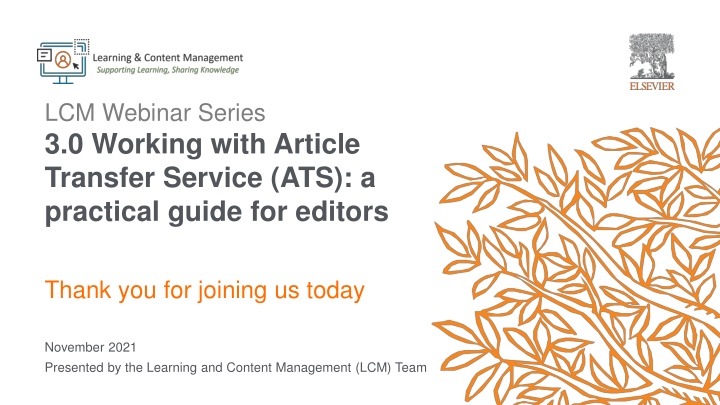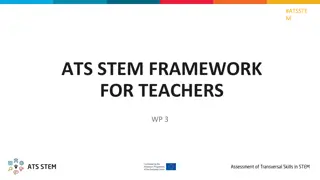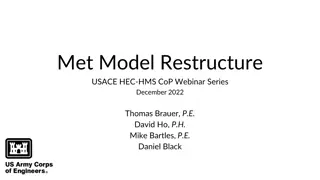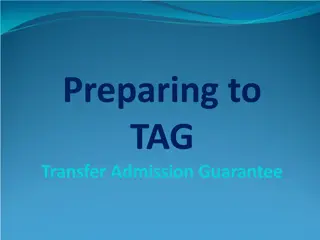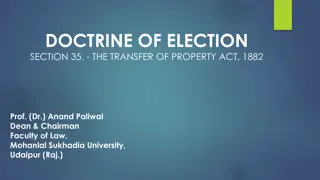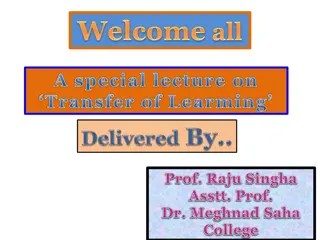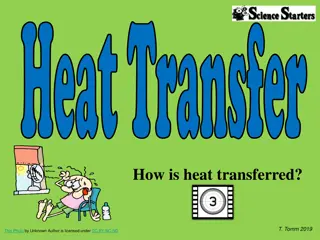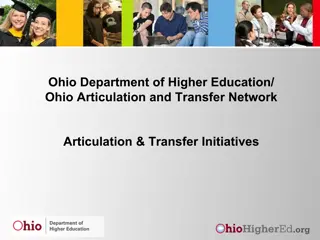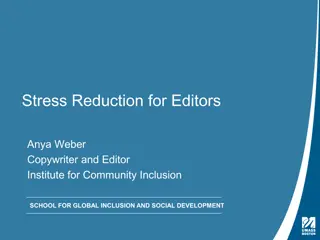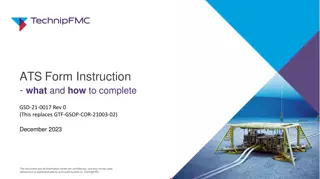Practical Guide for Editors: Working with Article Transfer Service (ATS)
A comprehensive webinar series exploring the intricacies of Article Transfer Service (ATS) within Elsevier, highlighting its importance, benefits, workflows, and connections in Editorial Manager. Editors learn how ATS streamlines manuscript transfers between journals, benefiting both authors and editorial teams.
Download Presentation

Please find below an Image/Link to download the presentation.
The content on the website is provided AS IS for your information and personal use only. It may not be sold, licensed, or shared on other websites without obtaining consent from the author.If you encounter any issues during the download, it is possible that the publisher has removed the file from their server.
You are allowed to download the files provided on this website for personal or commercial use, subject to the condition that they are used lawfully. All files are the property of their respective owners.
The content on the website is provided AS IS for your information and personal use only. It may not be sold, licensed, or shared on other websites without obtaining consent from the author.
E N D
Presentation Transcript
Edit Master text styles LCM Webinar Series 3.0 Working with Article Transfer Service (ATS): a practical guide for editors Thank you for joining us today November 2021 Presented by the Learning and Content Management (LCM) Team
3.0 Working with Article Transfer Service (ATS): a practical guide for editors Agenda What is Article Transfer Service (ATS) and why is it an important tool? What ATS workflows are possible in Editorial Manager and how do they work? What is the ATS experience for editors in both feeder and receiver journals, as well as authors?
3.0 Working with Article Transfer Service (ATS): a practical guide for editors What is ATS? Article Transfer Service (ATS) is the process of rejecting an article from one journal and facilitating the submission to a more suitable journal within Elsevier. Journal A Paper is rejected Journal B Paper is submitted Feeder journal Receiver journal
3.0 Working with Article Transfer Service (ATS): a practical guide for editors Benefits of ATS Why is it important for you as Editor to actively participate in the transfer process? Transfers are easy and no extra work is required from you. You have assessed the manuscript already, and that knowledge can be used to help the author get published in another journal. It helps with retention rate: Metrics show a larger portion of rejects from Elsevier journals are high quality and go on to be published in competitive titles Multiple journals engaged in ATS have been able to help over 10% of rejected authors to publication We ve received positive feedback from authors, such as: I like the idea very much, the service would make my life easier. It gives you the idea that they care about your paper and they care about you.
3.0 Working with Article Transfer Service (ATS): a practical guide for editors ATS connections in Editorial Manager Unidirectional Journal A Journal B Bidirectional Journal B Journal A
3.0 Working with Article Transfer Service (ATS): a practical guide for editors ATS workflow Though multiple workflows are available, the ATS process comprises the following steps: Paper is rejected from Journal A with offer of transfer to Journal B or Journal C Editor of Journal A decides to reject paper using a transfer decision term Author Author accepts the transfer offer to Journal B Paper is accepted for publication in Journal B completes the submission of the paper to Journal B Guidance is that transfer offers should be made to approximately 60% of rejected manuscripts
3.0 Working with Article Transfer Service (ATS): a practical guide for editors Common ATS Workflows Feeder journal Editor rejects paper using a transfer decision term Author is sent offer to transfer to selected receiver journals Editor selects receiver journals Editors Choice Feeder journal Editor rejects the paper using a transfer decision term Author is sent offer to transfer to ALL receiver journals and makes their own selection Authors Choice
3.0 Working with Article Transfer Service (ATS): a practical guide for editors Common ATS Decision Terms Transfer Pre-Review Reject and transfer decision is made pre-review (ie, a desk reject ). Transfer Post-Review Reject and transfer decision is made post-review (ie, a standard reject ). Transfer Recommended Accept Reject and transfer decision made post-review that is used to guarantee acceptance in the receiver journal. Feeder Editors may specify conditions of acceptance (ie, revisions) in the decision letter. Transfer Guaranteed Review* Reject and transfer decision made pre-review that is used to guarantee peer review in the receiver journal. *If Editors are interested, they should flag to their Publishers, who can advise on what might be possible.
3.0 Working with Article Transfer Service (ATS): a practical guide for editors Editor experience: Feeder Journal
3.0 Working with Article Transfer Service (ATS): a practical guide for editors Editor Experience: Feeder Journal
3.0 Working with Article Transfer Service (ATS): a practical guide for editors Author's Perspective 2. Manuscript is automatically sent to journal B 1. Author accepts transfer offer 4. Author makes any desired changes and completes the submission in Journal B 3. Author gets e-mail and logs in to EM site of Journal B
3.0 Working with Article Transfer Service (ATS): a practical guide for editors Editor Experience: Receiver Journal
3.0 Working with Article Transfer Service (ATS): a practical guide for editors Editor Experience: Receiver Journal Transfer Information Post Peer review
Edit Master text styles Thank you for joining us today. See you next time!
